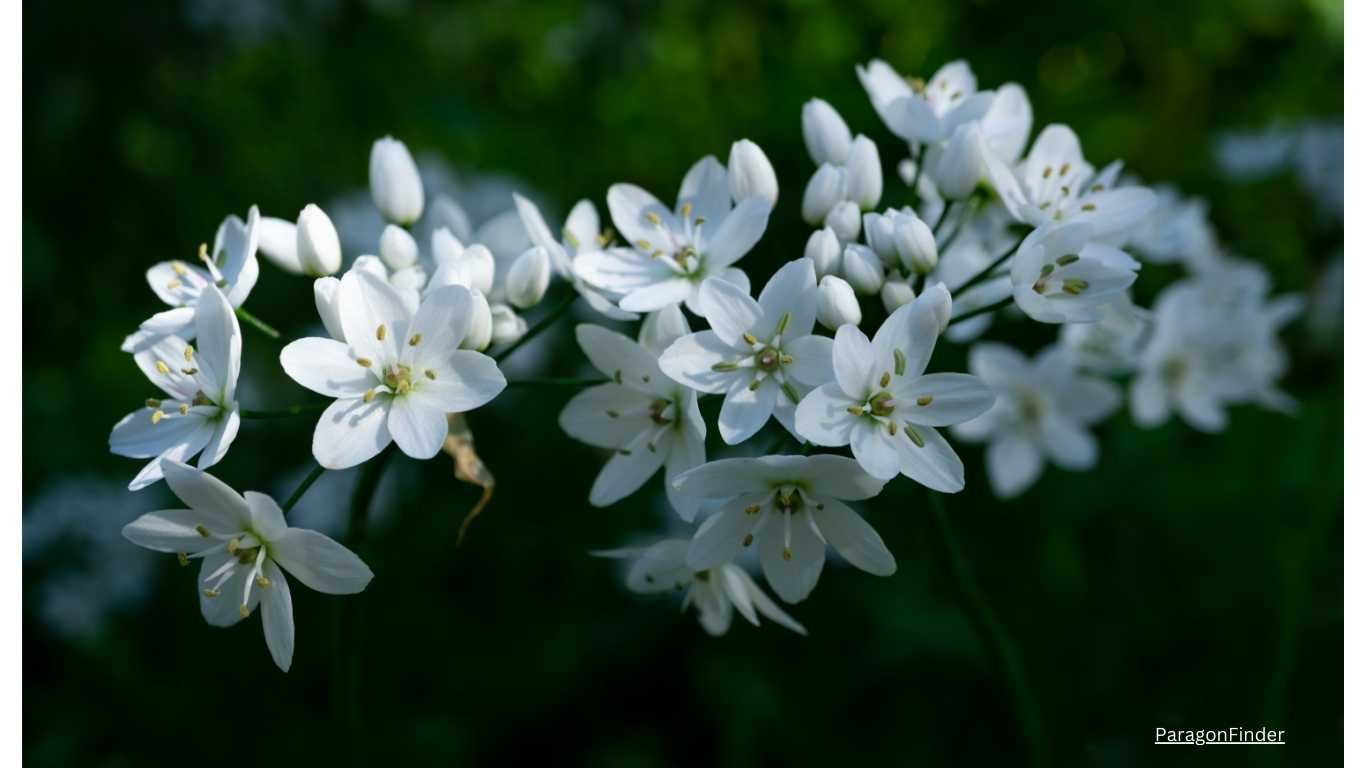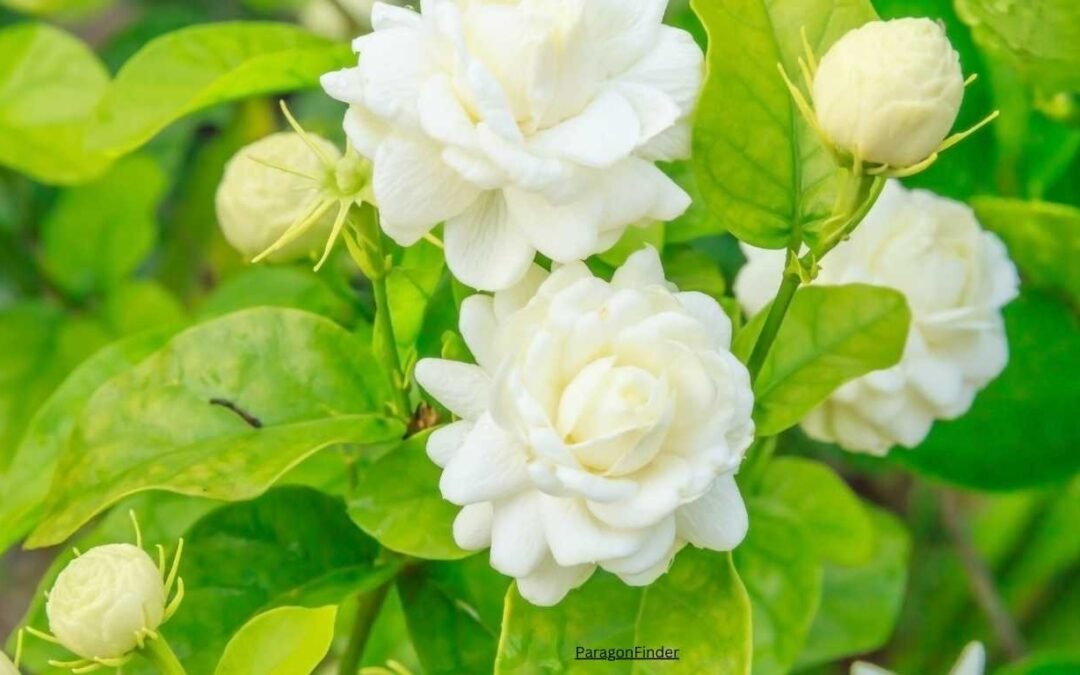Jasmine plants are cherished for their fragrant flowers and lush foliage, making them a favorite among gardeners. To ensure these lovely plants thrive and produce abundant, healthy blooms, proper fertilization is essential. In this article, we’ll explore the best practices for fertilizing jasmine, based on both expert advice and personal experience. Whether you’re a novice gardener or an experienced green thumb, these tips will help you grow beautiful jasmine plants.

Understanding Jasmine’s Nutritional Needs
Before diving into the specifics of fertilizing jasmine for healthy blooms, it’s important to understand what these plants need. Jasmine plants, like all flowering plants, require a balanced diet of macronutrients (nitrogen, phosphorus, and potassium) and micronutrients (iron, magnesium, and others).
- Nitrogen (N): Promotes lush, green foliage.
- Phosphorus (P): Encourages strong root development and abundant flowering.
- Potassium (K): Enhances overall plant health and resistance to diseases.
In addition to these primary nutrients, jasmine plants benefit from trace elements such as iron, magnesium, and manganese, which are vital for various physiological functions.
My Personal Experience with Jasmine Fertilization
When I first started growing jasmine, I was thrilled by the prospect of filling my garden with its delightful scent. However, my initial attempts yielded lackluster results. The plants were green but produced few flowers, which was disappointing. After consulting with experienced gardeners and conducting some research, I realized that my fertilization routine needed an overhaul.
By adjusting my approach, I eventually succeeded in getting my jasmine plants to bloom profusely. Here’s a detailed guide based on what I learned from my personal experience and expert recommendations.
Choosing the Right Fertilizer for Jasmine
The first step in fertilizing jasmine for healthy blooms is selecting the right fertilizer. There are several types of fertilizers available, each with its pros and cons.
Organic Fertilizers
Organic fertilizers, such as compost, manure, and bone meal, are excellent for jasmine plants. They release nutrients slowly, improving soil structure and fertility over time. I found that using well-composted manure in the spring gave my jasmine a significant boost.
- Compost: Provides a balanced mix of nutrients and improves soil aeration.
- Manure: Rich in nitrogen, manure helps in lush foliage growth.
- Bone Meal: High in phosphorus, bone meal promotes strong root development and flowering.
Inorganic Fertilizers
Inorganic, or synthetic, fertilizers provide a quick release of nutrients, which can be beneficial for immediate growth spurts. When using inorganic fertilizers, it’s crucial to follow the manufacturer’s instructions to avoid over-fertilization, which can harm the plants.
- Balanced Fertilizers (10-10-10): Equal parts nitrogen, phosphorus, and potassium. Good for general use.
- Bloom Boosters (10-30-20): High in phosphorus to encourage flowering.
When to Fertilize Jasmine
Timing is crucial when fertilizing jasmine. Here’s a schedule that worked well for me:
Early Spring
In early spring, as soon as new growth appears, apply a balanced fertilizer or a high-phosphorus fertilizer to encourage root development and blooming. I typically use a slow-release organic fertilizer at this time.
Mid-Summer
During the summer growing season, jasmine plants benefit from additional feeding. A liquid fertilizer every 4-6 weeks can keep the plants vigorous. I use a balanced liquid fertilizer and sometimes a high-potassium fertilizer to enhance flower production.
Late Summer to Early Fall
As the blooming season winds down, I apply a final round of balanced fertilizer to prepare the plants for the dormant winter period. This helps the plants store energy and nutrients for the next growth cycle.
How to Apply Fertilizer
The method of application can significantly impact the effectiveness of fertilization. Here’s a step-by-step guide on how I fertilize my jasmine plants:
Soil Preparation
Before applying any fertilizer, ensure the soil is well-prepared. Jasmine plants prefer well-draining soil rich in organic matter. If the soil is compacted, loosen it with a garden fork and mix in compost.
Applying Granular Fertilizer
- Measure the Fertilizer: Follow the recommended dosage on the fertilizer package.
- Distribute Evenly: Spread the fertilizer evenly around the base of the plant, avoiding direct contact with the stem.
- Water Thoroughly: After applying the fertilizer, water the plants thoroughly to help dissolve the nutrients and carry them to the roots.
Using Liquid Fertilizer
- Dilute as Directed: Mix the liquid fertilizer with water according to the package instructions.
- Apply to Soil: Pour the diluted fertilizer directly onto the soil around the plant’s base.
- Foliar Feeding: Occasionally, I use a diluted liquid fertilizer to spray the leaves, especially if I notice any nutrient deficiencies.
Common Fertilization Mistakes to Avoid
In my journey with jasmine, I encountered a few common pitfalls that can hinder plant growth and blooming. Here’s what to watch out for:
Over-Fertilization
Excessive fertilization can lead to nutrient burn, characterized by yellowing leaves and stunted growth. Always adhere to the recommended dosage and frequency.
Under-Fertilization
On the flip side, insufficient fertilization can result in poor growth and few flowers. Regular feeding according to a schedule helps maintain plant health.
Incorrect Timing
Fertilizing at the wrong time can stress the plants. Avoid fertilizing during the dormant winter period or in extreme heat.
Monitoring Plant Health
Regular monitoring of your jasmine plants is essential to ensure they are receiving the right amount of nutrients. Here’s what to look for:
Leaf Color and Texture
Healthy jasmine leaves should be vibrant green and smooth. Yellowing leaves can indicate nutrient deficiencies, such as nitrogen or iron.
Flower Production
Abundant flowering is a good sign that your fertilization routine is effective. Sparse blooms may suggest a need for more phosphorus.
Overall Growth
Jasmine plants should exhibit steady growth. Stunted or weak growth might indicate soil issues or improper fertilization.
Additional Tips for Healthy Jasmine Blooms
Beyond fertilization, a few additional practices can enhance the health and blooming of your jasmine plants.
Proper Watering
Jasmine plants require consistent moisture but do not tolerate waterlogged soil. Water deeply but allow the soil to dry slightly between waterings.
Pruning
Regular pruning helps maintain plant shape and encourages new growth. I prune my jasmine after the blooming season to remove dead or weak branches.
Pest and Disease Management
Keep an eye out for common pests like aphids and spider mites. Treat infestations promptly with insecticidal soap or neem oil. Ensure good air circulation to prevent fungal diseases.
Mulching
Applying a layer of mulch around the base of the plant helps retain soil moisture, regulate temperature, and suppress weeds. Organic mulches like straw or wood chips work well.
Conclusion
Fertilizing jasmine for healthy blooms involves understanding the plant’s nutritional needs, choosing the right fertilizer, and applying it correctly. Through my personal experience, I’ve learned that a balanced approach to fertilization, combined with proper watering, pruning, and monitoring, leads to thriving jasmine plants and abundant, fragrant flowers. By following these guidelines, you can enjoy the beauty and scent of healthy jasmine blooms in your garden.

